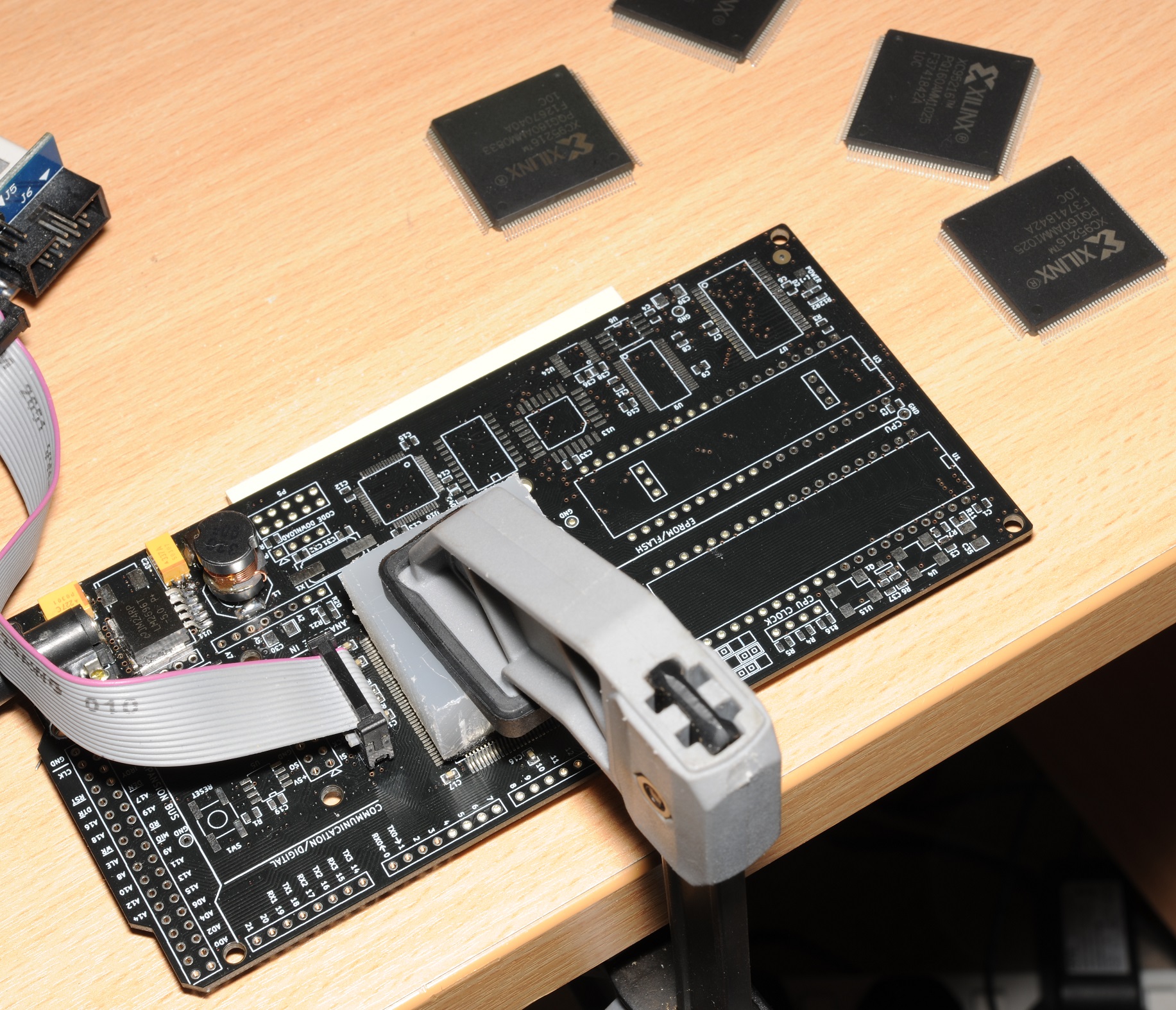If you happen to be producing boards which use Xilinx’s long discontinued classic 5V CPLDs which are purchased as scrap from the far east (which I hope you are not); You may have found that getting quality samples is not so straight forward.
The situation is not so bad for smaller devices, but for the larger ones, it’s tough. One of my projects (8OD) is stuck with the XC95216. Being a 100% 5V design with a swag of 5V bidirectional I/O pins, converting to a modern 3.3V device is completely out of the question.
Without the spare time or willingness to adapt the design to an inevitably ridiculously expensive alternative; I have been dependent on purchasing recycled chips from the far east (typically sold on eBay or AliExpress).
In terms of what arrives in the post, it’s a mixed bag. I’ve had perfect genuinely new batches, and other batches which are in poor physical condition (i.e. scratched, pins bent / missing).
To frustrate matters further, the best (absolutely perfect) batch I received then prompted me to make a second purchase from that same seller. But upon arrival of that parcel, I quickly see that it was sent from a different address, different packaging. Surprise surprise… Some were clearly scrap, and most of them were dead.
Here is a sample of the kinds of errors I find when I assemble boards when dead chips:
Completely sodding’ dead
When dealing with properly dead chips we sometimes see an error like this from iMPACT:
PROGRESS_START - Starting Operation. INFO:iMPACT:583 - '1': The idcode read from the device does not match the idcode in the bsdl File. INFO:iMPACT:1578 - '1': Device IDCODE : 00000000000000000000000000000000 INFO:iMPACT:1579 - '1': Expected IDCODE: 00101001010100010010000010010011
I have also seen iMPACT spit out messages like this when attempting to connect:

Less than healthy
I have seen quite a few that sort-of work, but fail on the identification stage, like this:
Identifying chain contents...INFO:iMPACT:1585 - '0':The part appears to be of type xc9500, but could not be identified correctly . '0': : Manufacturer's ID = Xilinx unknown part, Version : 1 INFO:iMPACT:1111 - Can't locate bsdl file xc9500.bsd.
This is quite a curious error, as I have had chips, both from the same batch, identical markings etc where one identifies OK, but the other has a bit or two twiddled (i.e. version as shown here).
Avoiding wasting your time with dead chips
I have spent a lot of hours checking soldering, voltages, JTAG signals on my scope etc, all to no avail. I do not know what is involved in recycling these chips but whatever the process, a crapload of them don’t survive it.
Quite how so many end up dead leaves one to ponder, because from my own experiences, they are pretty robust. I have some XC95216’s that have been carelessly soldered/de-soldered 5 times or so by myself, zapped with large electrostatic discharges and even those survived! Perhaps these chips are typically removed from equipment with a propensity for suffering lightning strikes? Are they de-soldered with a flame thrower?
A quick google image search for “Guiyu” gives us a hint of what this business is like. My own guess it that they are killed with excessive temperatures during de-soldering.
Rule of thumb seems to be, if it can be successfully programmed with iMPACT, it’ll work. I have not yet found one that then went on to fail the burn-in test.
And on that note, I took the time to build a simple rig to weed out the duds:
It’s a blank PCB with power, decoupling and JTAG components fitted. I then use a small clamp to press the CPLD onto its footprint on the board, with a block of polypropylene and a layer of adhesive felt to ensure even pressure. To keep it extra high-tech – I’ve also got a pad of post-it notes underneath.
As much as this may not appear to be a reliable mechanism, it most certainly has proven to be. I happened to have preserved a tray of known-good / known-bad chips and when I tested them with this, the good chips – even those weren’t very well cleaned up (i.e. still some solder on them) verified perfectly in this rig.
Last but not least:
If you end up with a bunch of dead chips, use buyer protection to get your money back.
This is a lot easier on AliExpress than eBay
At the very least we may be able to entice recyclers to be a little more cautious.
Posted in Bits and pieces
It is tough working with outmoded 5v logic requirements.
I have been trying to draw up some ideas for my own 8086 project, and while the 9500XL series is 5v tolerant, it is not 5v output.
I have been trying to compartmentalize everything and keep the core processors and support in the 5v domain, and put cpld’s everywhere to allow for level shifting and decode for my expansion.
Good luck with that! Sounds complicated. Level shifting bi-directional GPIOs is tough. I did not ever find any device with individually reverseable pins, let alone consider how that could be controlled.
I designed a fairly involved mixed voltage board quite a few years ago and still feel a little dirty for it.
Did look at XC9500XL but the ‘3.3V Output’ limitation was a deal breaker for me. Also meant I needed a second switching regulator to power it.
In the end I made the decision to use XC9500 even though I knew it would soon be discontinued.